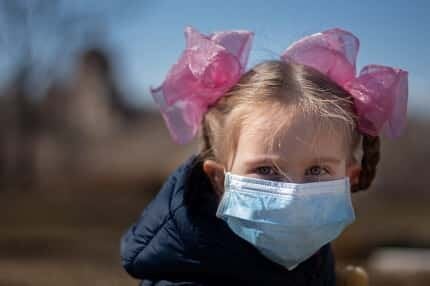In Lewis Carroll’s Alice in Wonderland, the Mad Hatter poses this riddle: “Why is a raven like a writing desk?” After some further conversation, the Hatter asks Alice:
‘Have you guessed the riddle yet?’…
‘No, I give it up,’ Alice replied. ‘What’s the answer?’
‘I haven’t the slightest idea,’ said the Hatter.
We’ve seen this conversation turned on its head since COVID started. We faced a riddle—a virus—and we had experts coming out of the woodwork with answers. For the first time in our history, we quarantined the healthy members of our population. We put masks on young and old alike, we closed small businesses across our country while keeping Walmart open and allowing Amazon to rake in billions of dollars. We’ll likely never know the number of people who perished because they were too frightened by the virus to seek medical attention for other health problems. We’ve seen a wave of deaths from opioids, and violent crime has gone through the roof.
And the children have suffered most of all, with massive psychological and educational setbacks. Many of them have fallen behind in school, and the better part of a year some of them missed out on extracurricular activities ranging from football to school plays. Many, too, have endured stress, anxiety, and loneliness.
Jeanne Noble, director of COVID response in the University of California San Francisco emergency room, reports that while adult suicides in that state fell last year by 11 percent, they jumped 24 percent among those under 18. Attempted suicides, eating disorders, and mental health troubles among the young also skyrocketed. Noble discovered as well that summer camps this year are seeing increased levels of anxiety and depression not only among the campers, but also among camp counselors. Moreover, children of all ages report that even when they returned to school, masks and social distancing caused them to feel isolated from their classmates.
Since the pandemic began in March 2020, 349 children up to the age of 17 have died with the Wuhan Virus. Most of these victims had underlying health conditions. A recent Johns Hopkins study of 48,000 children under 18 found zero deaths for healthy children.
Meanwhile, the governors and the “experts” in some states are again calling for masks when schools reopen—if they reopen—this fall. This month the Center for Disease Control recommended the continuance of social distancing, but even worse, that children ages two and up who are not fully vaccinated should wear masks. One line from an update to this report brought me some sad laughter: “in general, people do not need to wear masks when outdoors.”
Lots of answers, lots of guidelines, lots of requirements.
Now maybe it’s time for some questions.
How many of our isolated young people from around the nation committed suicide this past year, deaths caused in part by the Wuhan Virus proscriptions? Do those suicides exceed viral deaths? How many are now being treated for depression?
Maybe it’s time we got some real data on the effectiveness of masks. We should also study the effects masks are having on the mental health of children and teenagers. Besides, how does a daycare worker supervising six three-year-olds keep them in masks all day long? And since it’s now clear from all available evidence that the vast majority of those 17 years and younger experience almost no reaction to this virus, maybe we should consider why they are being singled out to wear masks.
The biggest questions of all concern how long this show goes on. How much longer do our experts and authorities expect us to continue treating one another as if we were carriers of the plague? Are we willing to watch our children receive another year of inferior education? Many of us are no longer willing to participate in a charade that has already done grave harm to our social interactions and our constitutional liberties.
In a presentation of her report, Jeanne Noble concludes, “Sacrificing the development and well being of our children for enhanced infection control was scientifically unnecessary and ethically unsound.”
Let’s not keep making the same mistake over and over again.
Image Credit:
(Creative Commons license; Drug Addiction Clinic Vita; https://www.vperemen.com)

Leave a Reply